The haircuts have dated.
The clothing looks dated.
The puns feel very dated.
The page layouts look dated.
The screen treatment of the photographs look dated.
But a lot of the thinking, not so much.
As Bill Bernbach said “It took millions of years for man’s instincts to develop.
It will take millions more for them to even vary.
It is fashionable to talk about changing man.
A communicator must be concerned with unchanging man,
with his obsessive drive to survive, to be admired, to succeed, to love, to take care of his own.”
Ron Anderson’s views on creative education, below,
are probably the best explanation as to why I’ve posted these yellowing pages from the last century.
ON CREATIVE EDUCATION:
“I’ve never worked for Bernbach, Ogilvy, Ally. But I’ve learned from reading their speeches.
I’ve never worked with Bob Gage, Helmut Krone, Bill Taubin.
But I’ve learned by studying their work.
The way I see it, I’ve learned from the best people in the business.”
– Ron Anderson.
ON THE PERSONAL CREATIVE IMPERATIVE:
“In a sense, you’re self-employed; you work for yourself, work to meet your standards.
Others praise doesn’t count if you don’t meet your own standards.
You may kid the world but you can’t kid yourself.”
– David Abbott.
ON MAKING GREAT ADS:
“The real trick is figuring out what the substance of an ad should be, and then in handling that substance in the best way possible.”
– Carl Ally.
ON CREATIVE DISCIPLINE:
“When we present the advertising there’s no surprise in terms of direction and strategy.
Those have already been agreed on.
What’s new is the execution; the style, the personality, the feel of the advertising.”
– Ralph Ammirati.
ON THE OGILVY SECRET:
“I was an agency with a different style; the unselfconscious, totally straight, factually based approach. Invaluable training. To this day, when I’m stuck, I’ll do a David Ogilvy advertisement; a what/where/when/how/why kind of ad. Once that’s done I know what to say. Then I tell myself, ‘Now you have to beat it’.”
– Tony Brignull.
ON GOOD WRITERS:
“Good writers come in all shapes and sizes. What they seem to have in common is an ability to hear, to listen, to understand – and to distil what they hear and learn into something that’s human and persuasive”
– Jay Chiat.
ON THE CREATIVE OBJECTIVE:
“We don’t just deal in executional technique. There must be something of substance beneath it. As Steve Dunn, my art director puts it, we seek to provide the cake, not just the icing.”
– Tim Delaney.
ON BELIEVING:
“Advertising is an act of faith. You think everything out, you write and rewrite, you research and re-search. But at some point, you have to swallow hard and run the stuff.”
– Jeff Goodby.
ON HIRING TALENT:
“We wanted people who could do the kind of work no one was doing. We had to look for potential. I found it tucked away in the back of portfolios, ads that never sold, ideas that had been killed.
I also found it by poring through hundreds of ugly little ads, looking for that spark, the willingness to take a great leap.”
– Phyliss Robinson.
ON SELLING IDEAS:
“Selling is an act of passion. When you’re passionate about an idea, it shows – and it’s easy to sell it.
I find it impossible to be cool and reserved – I won’t present an ad or campaign unless I really believe in it. And when I believe, I can be pretty persuasive.”
– Tom McElligott.
ON MAKING IDEAS WORK:
“You need to know about the tools. Type, photography, illustration, are tools. You need to know how they work, to know nearly as much as the people who specialize. For if you can’t use the tools, you can’t really make a good idea work”
– Helmut Krone.
It seems WSJ tried to get Creative Leaders off the ground in the nineties, I found these…
(If anyone has any that I’ve missed, please email them, I’ll add them.)








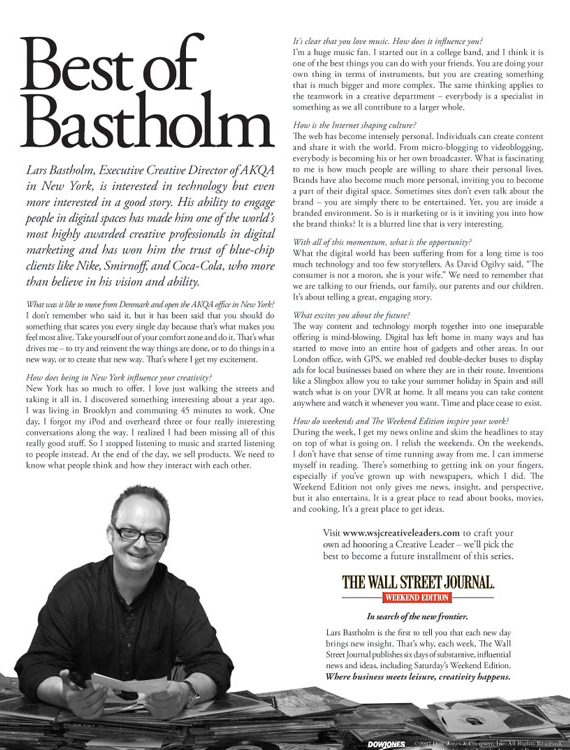



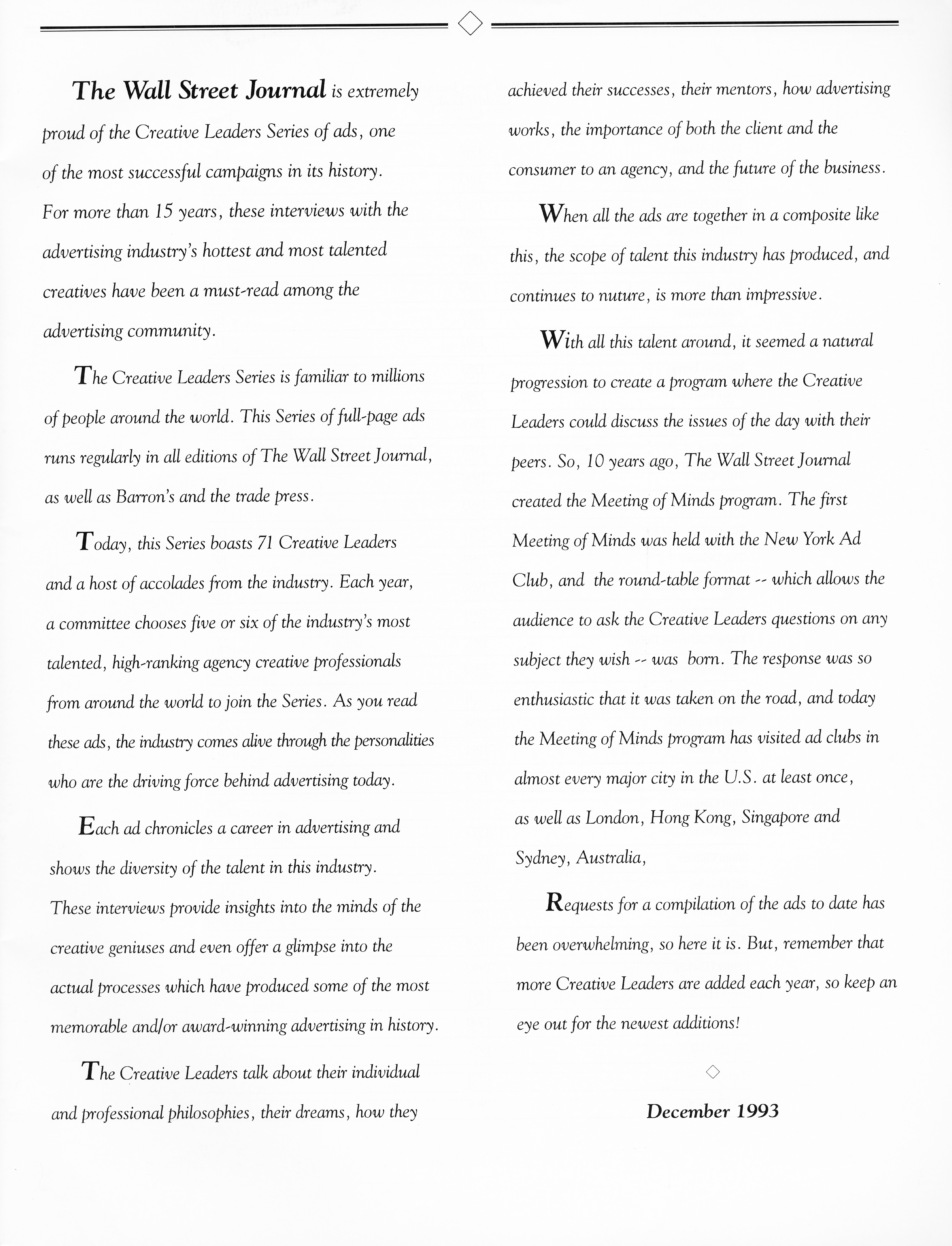













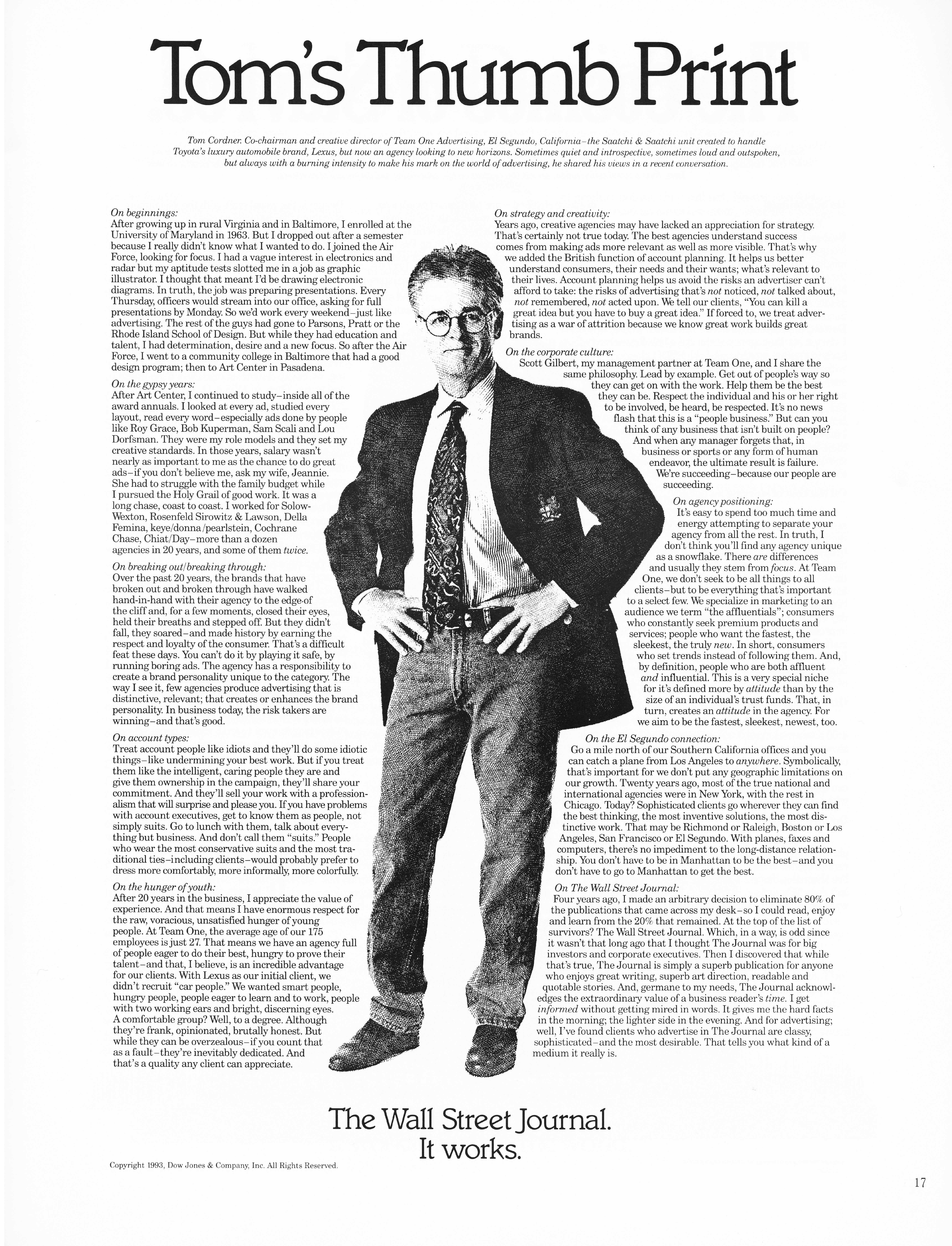




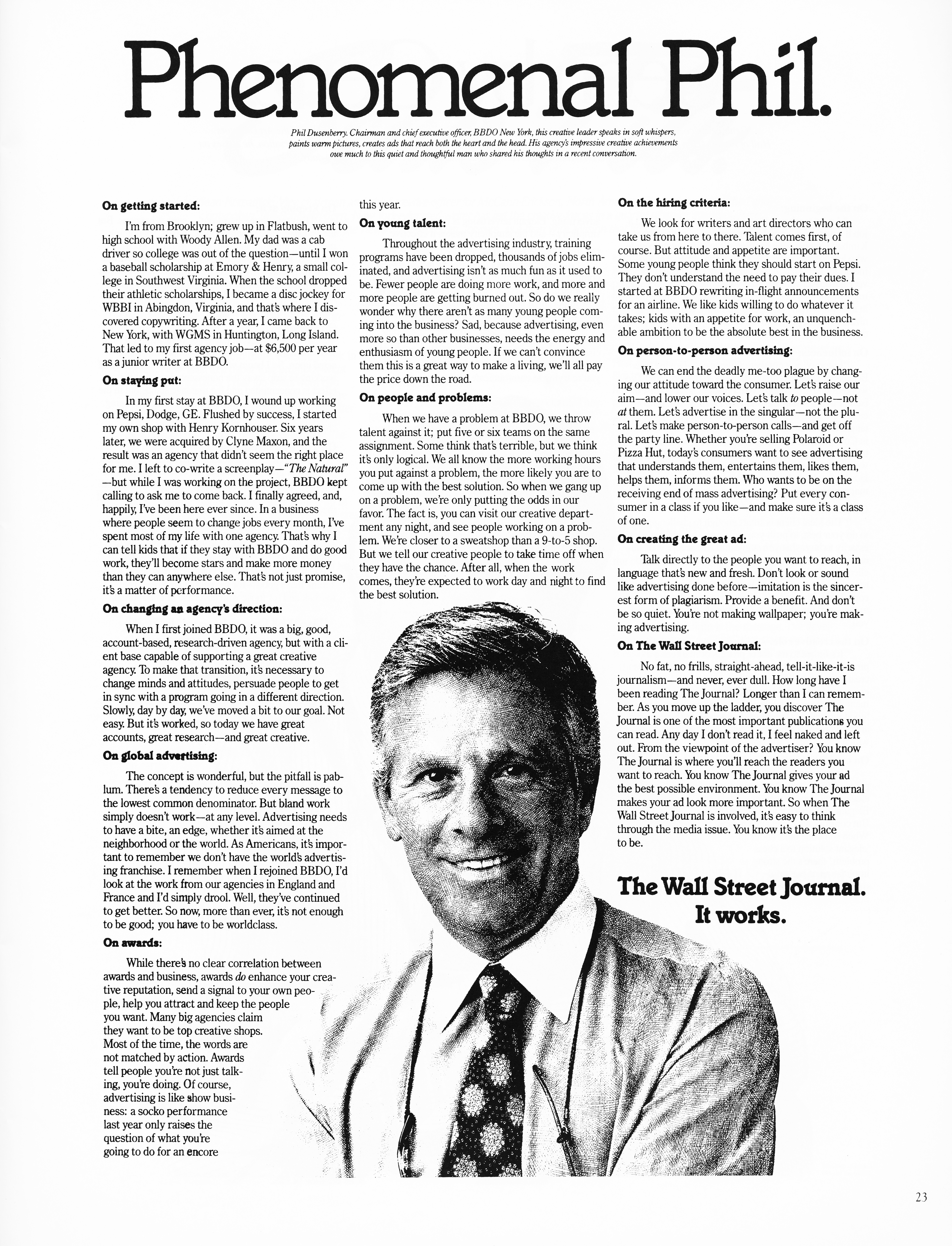



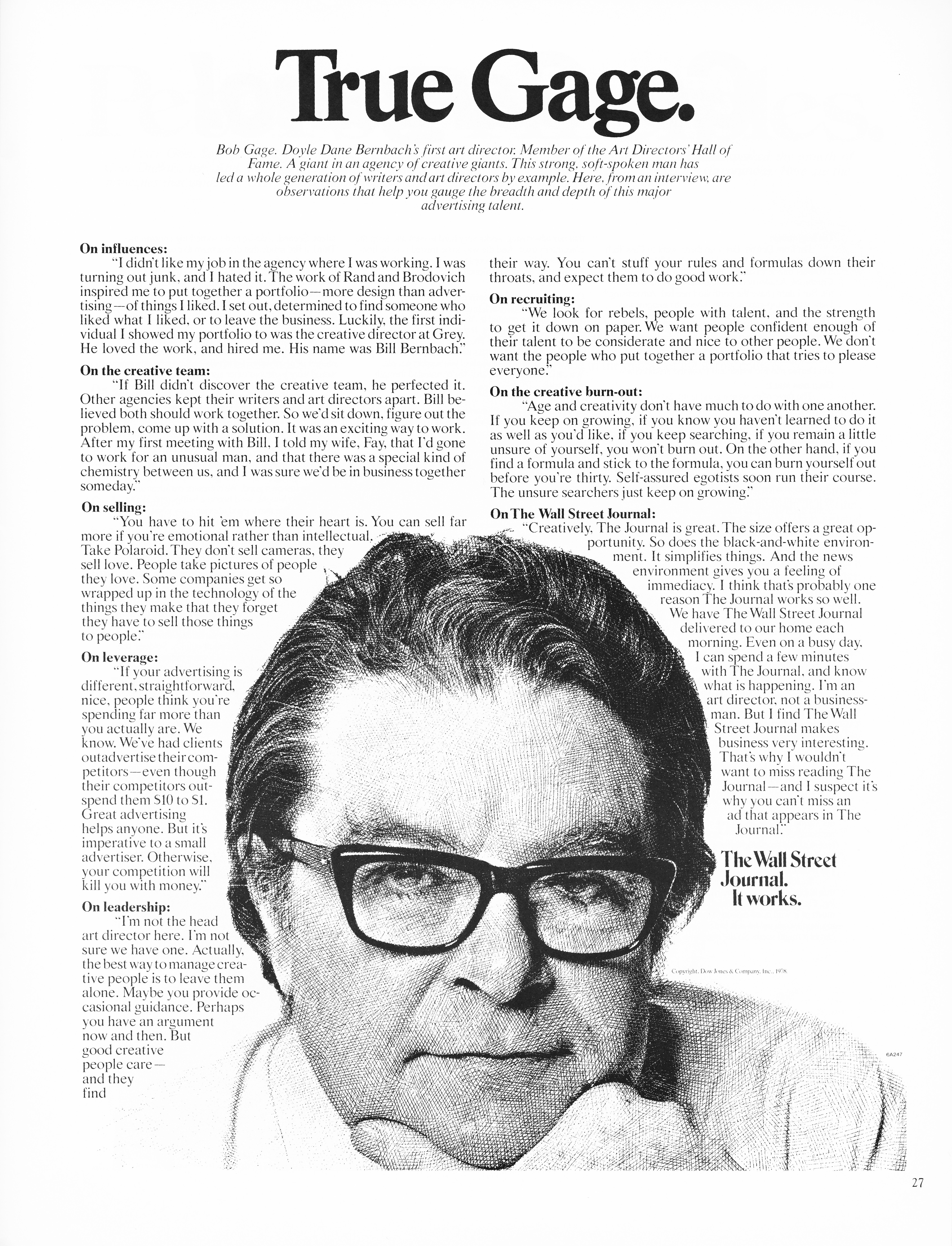



























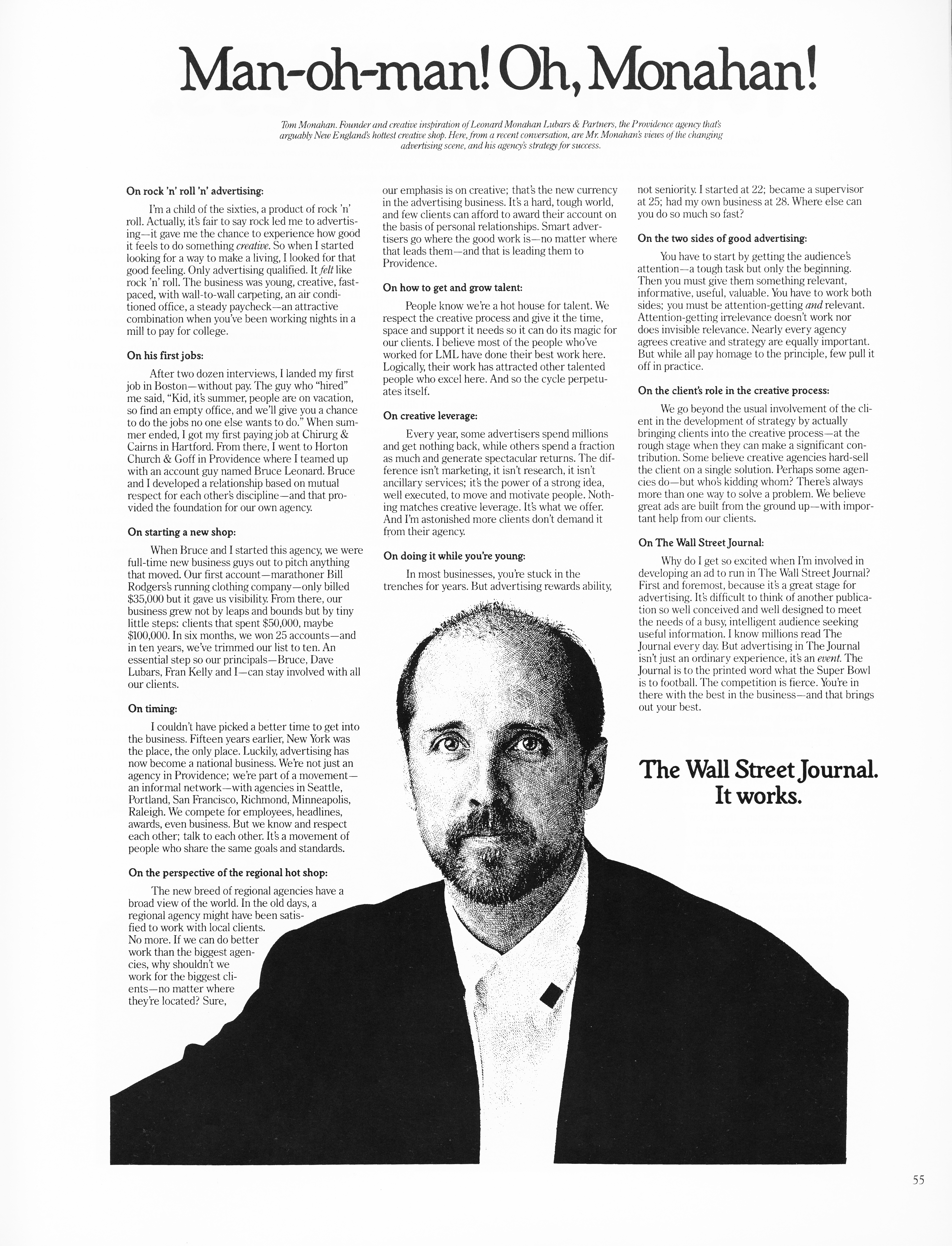
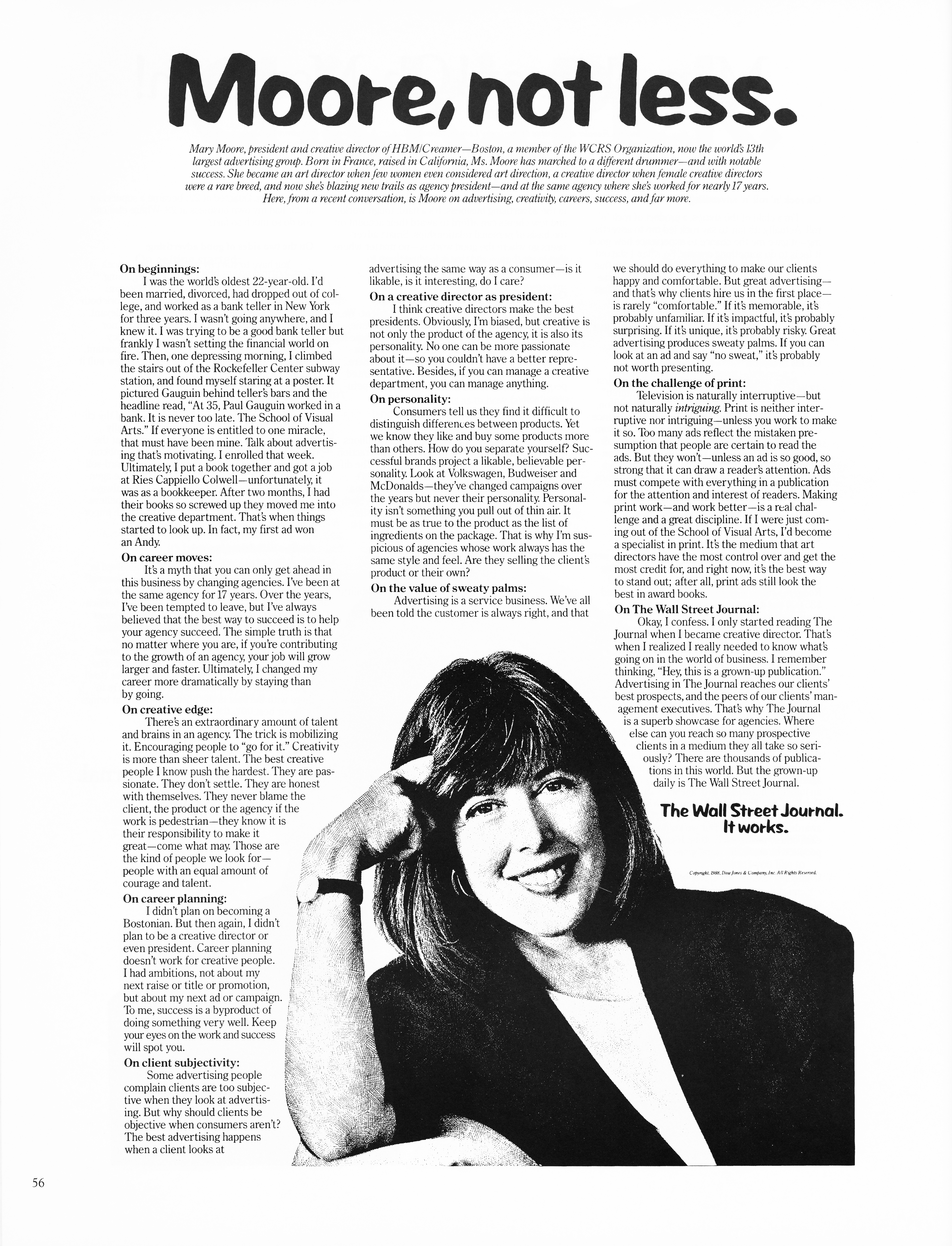
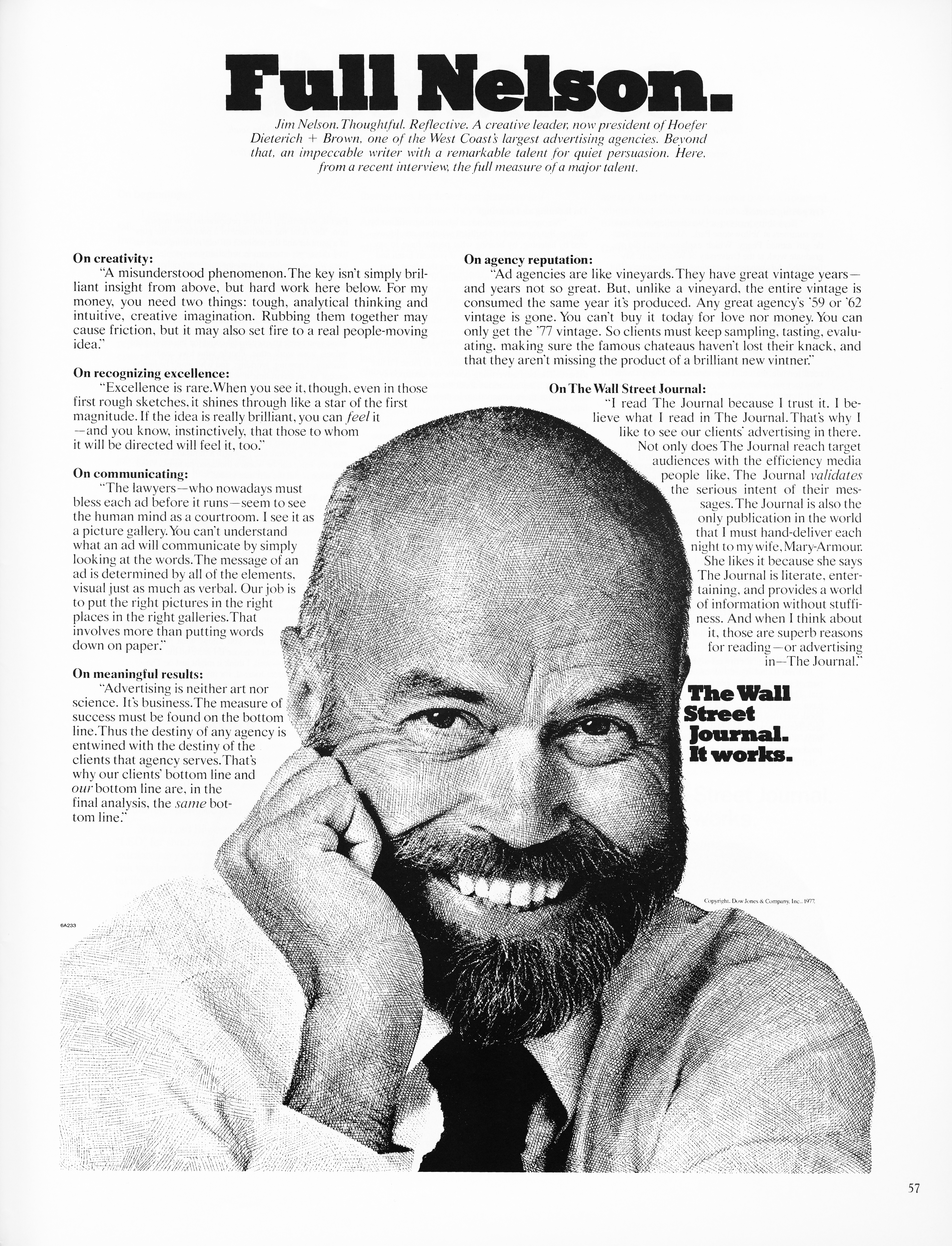
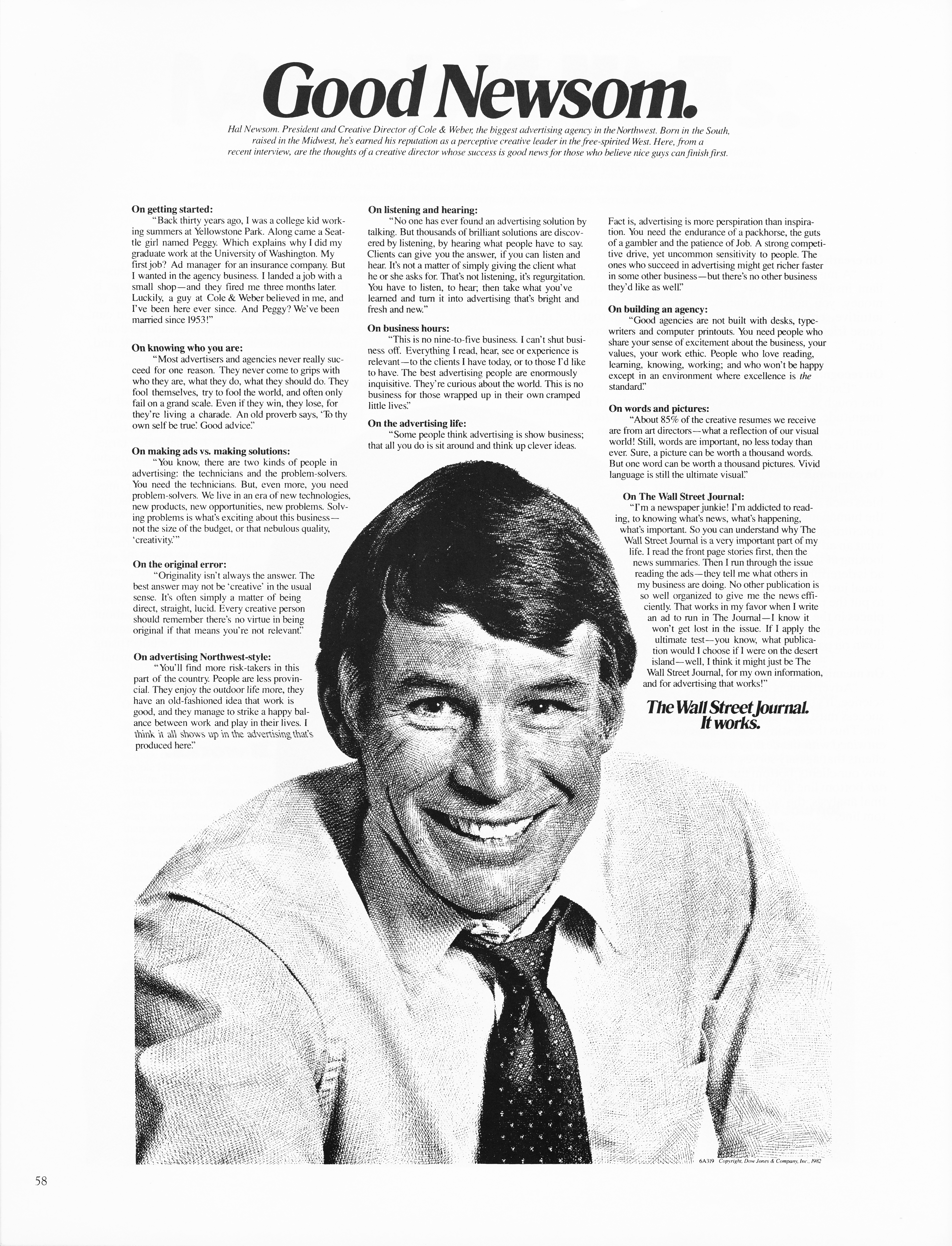



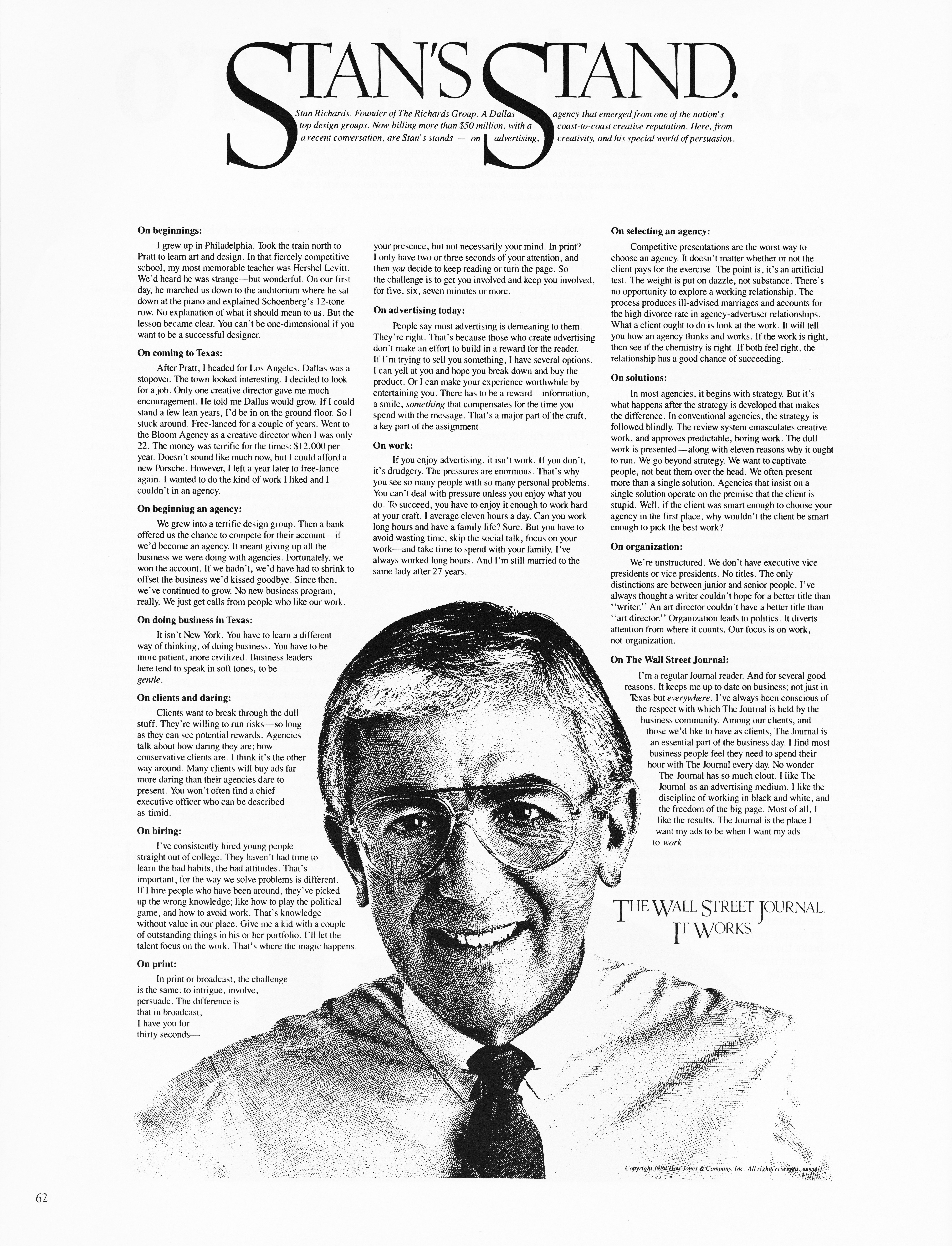



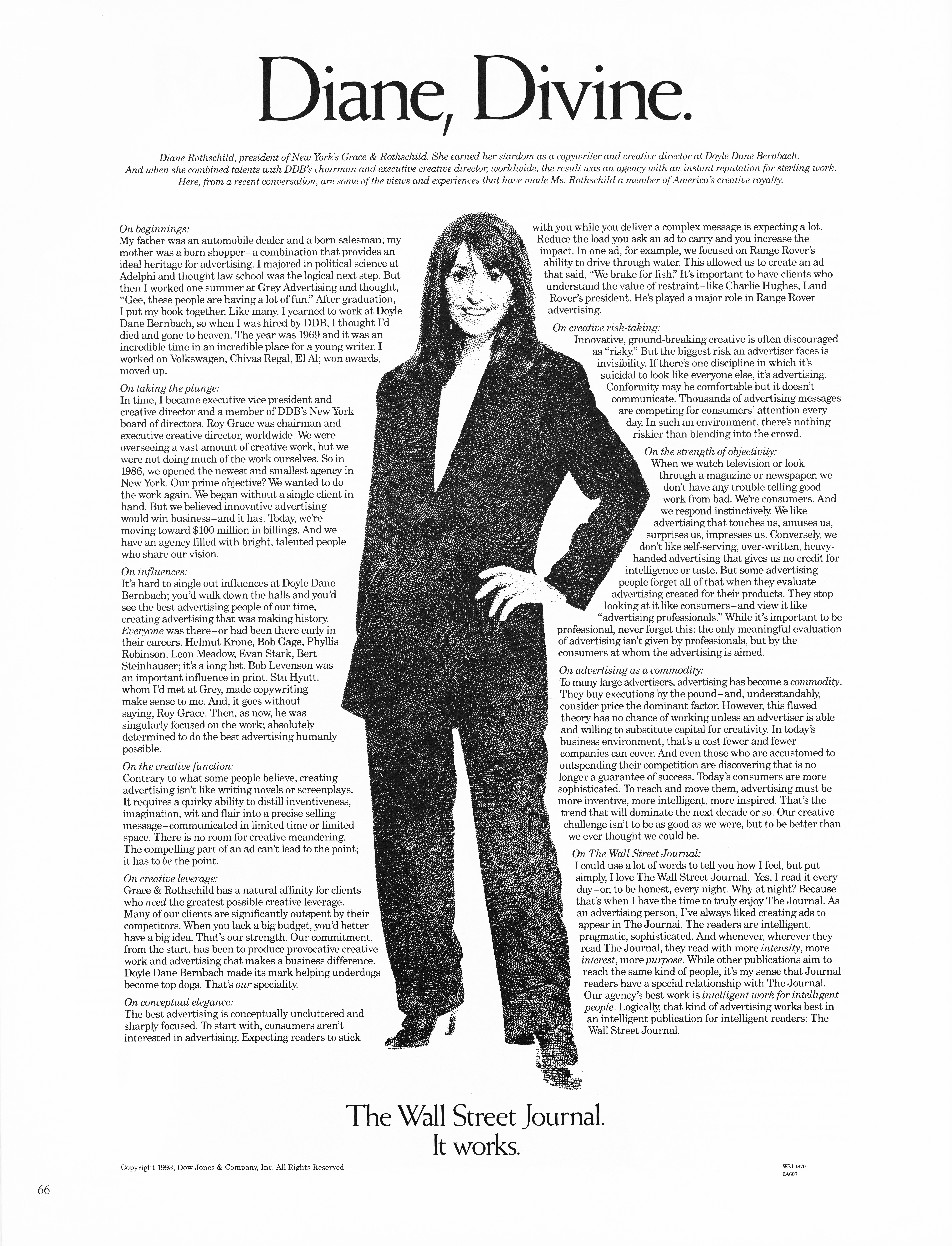

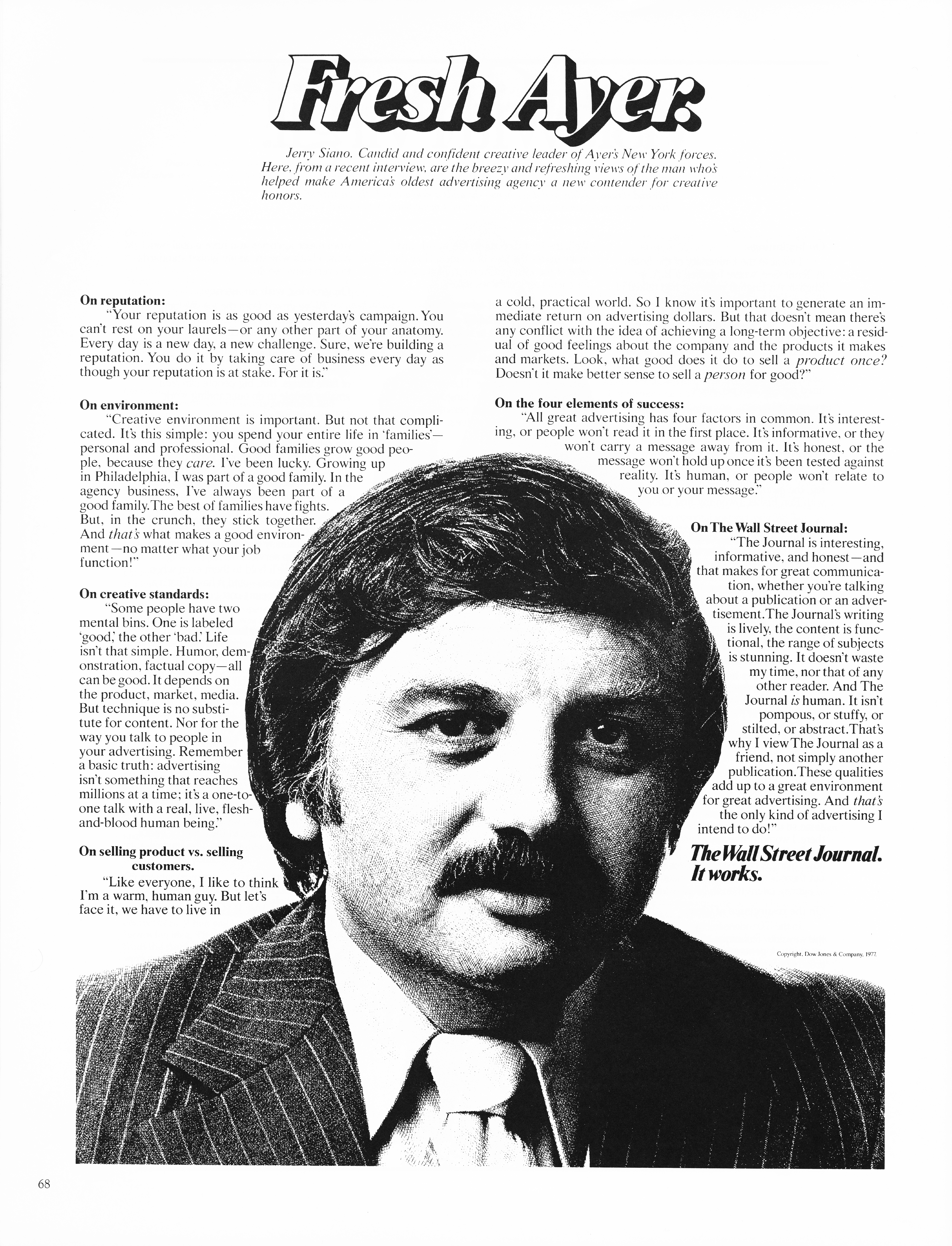






Oh wow…this is gonna take a while. And I will read it all. Thanks Dave.
What would they have done with you, Dave?
‘READ THIS OR DYE’
Bill Backer, “We won’t let a television commercial go to a client until we’ve done it as a print ad.” What an interesting idea. No one ever suggested that to me but I can see how it would expose style over substance. Great post once again – thanks Dave!
Hey, Dave. I’m compiling these into a single PDF if that’s okay with you. Just noticed you’re missing:
3. Index
5. Carl Ally
18. Stavros Cosmopulos
Of course Todd.
2nd page of Index and Carl Ally have been added.
(Don’t have Stavros?)
Dx
Not seeing the missing images, but here’s a link to a PDF of everything I have so far: https://we.tl/t-XisGvEFDNe
These bring back so many memories. In addition to the headlines, hairstyles and ties (remember ties?) being more than a little dated, more than a few of the folks profiled were chosen solely on the basis of the size of the media budgets they controlled on behalf of their clients. No names but one of those clients rhymes with bev-row-lay.
Hi Dave: Thanks for displaying all of these amazing ads. Did the WSJ ever publish them as a collection that you know of? Trying to find a printed copy or a high-res PDF. Thanks, Brian
Hey Brian, I understand there’s a book/brochure, but haven’t seen one personally. Dx